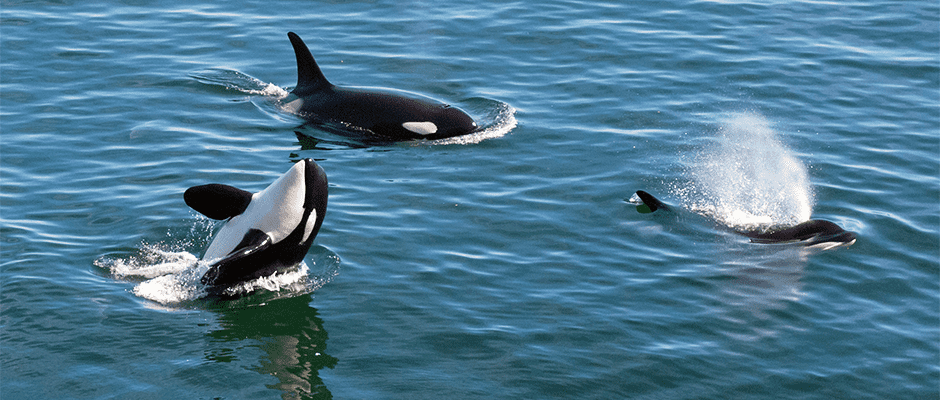Share this article
Canada finalizes Action Plan for at-risk killer whales
On Mar. 9, Fisheries and Oceans Canada (DFO) released the final version of its Action Plan for the Northern and Southern Resident Killer Whale (Orcinus orca) in Canada. The Action Plan identifies specific measures to aid in the recovery of the threatened northern resident and endangered southern resident killer whale populations that occupy the waters off of Vancouver Island, British Columbia, and northwestern Washington. Both populations have been listed under the Species at Risk Act (SARA) since 2003, and the measures are intended to carry out objectives identified in Canada’s Recovery Strategy published in 2011.
The Action Plan seeks to address four main categories of threats to the northern and southern resident killer whales including prey availability, environmental contaminants, noise pollution, and disturbance from human activities. Specific approaches and implementation measures are organized under broad strategies designed to alleviate the stresses that these threats pose for the two populations. For example, DFO will take actions to ensure that resident killer whales have an adequate and accessible food supply—particularly salmon—to allow for recovery. Some measures will be undertaken by the agency itself, while others will be carried out by partnerships with other agencies, organizations, or individuals.
World Wildlife Fund Canada (WWF-Canada) and other wildlife conservation groups have criticized the Action Plan as too weak to adequately protect the at-risk killer whales. In a Mar. 13 press release, WWF-Canada stated that the plan “does not include the strong, immediate actions that would help this species teetering on the edge of survival.”
David Miller, WWF-Canada’s President and CEO, believes that enough is known about the whales’ limiting factors to take more immediate action. “We’ve known for a long time about these problems,” he said. “We have to act on the information we have.”
John Ford, head of marine mammal research at DFO, said in an interview that although the whales are very vulnerable, the science behind killer whale population dynamics in the region is not yet extensive enough to define specific thresholds that the animals can withstand—making it difficult to formulate concrete regulations based on it.
The northern and southern resident killer whale populations are both very small, consisting of approximately 290 and 80 individuals respectively. They are genetically and socially isolated from the Pacific transient and offshore killer whales—which are also considered threatened under SARA—although their home ranges often overlap. The combination of multiple anthropogenic threats in addition to a naturally slow population growth rate renders the northern and southern resident whales’ outlook especially uncertain. Even under ideal circumstances, it could take at least 25 years for recovery to occur.
The southern resident population that travels between Canadian and U.S. waters is also listed as endangered under the Endangered Species Act, and the U.S. National Marine Fisheries Service finalized a Recovery Plan for the population in 2008.
Header Image: ©Miles Ritter








